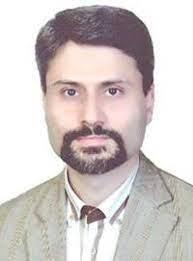Reza Boostani was born in Shiraz in 1973. He got his B.Sc. in Electrical Engineering from Shiraz University in 1996 and then got his M.Sc. and Ph.D. in Biomedical Engineering from Amirkabir University of Technology in 1999 and 2005, respectively. Afterward he joined CSE&IT department of Shiraz University in 2005 as an assistant Professor. He has become selected as distinguished researcher of Shiraz University three times in 2010, 2017 and 2023, respectively. In addition, according to Elsevier criterion, he has been selected in the list of top 2% scientists in the world both in 2022 and 2023. he has published more than 225 papers (including 145 journal papers and the rest are conference papers) and have 27 journal papers under review. Now, he is a full professor at Shiraz University and is the head of Biomedical Engineering Group from 2008 till now. His research area is biomedical signal processing, statistical pattern recognition and deep neural networks.
Computer Science, Artificial Intelligence, Machine Learning and Neurology
Ali A. Asadi-Pooya, M.D.,

Professor of Epileptology, Shiraz University of Medical Sciences, Iran;
Thomas Jefferson University, USA
Abstract: Due to ageing populations, neurological disorders are on the rise worldwide, leading to increased healthcare burden and diminished quality of life in people. On the other hand, recent advances in technology have allowed us access to a multitude of datasets pertaining to various dimensions in neurology and big data has started to transform the fields of neuroscience and neurology. During this talk, I will discuss and present why Computer Science, Artificial Intelligence, and Machine Learning studies and applications are important in Neurology, our studies in the field, and future directions.
Biography:
Dr. Ali A. Asadi-Pooya, M.D., is a Professor of Epileptology at the Department of Neurology, Shiraz University of Medical Sciences, Shiraz, Iran. He is also an Adjunct Research Associate Professor of Neurology, Jefferson Comprehensive Epilepsy Center, Department of Neurology, Thomas Jefferson University, Philadelphia, PA, USA. He did his fellowship in “epilepsy and clinical neurophysiology” at Thomas Jefferson University, Philadelphia, USA in 2006-2008. He has established an Epilepsy Care Unit and epilepsy surgery program with a multidisciplinary team in 2008 at Namazee Hospital, Shiraz, Iran. He has also founded the Shiraz Epilepsy Research Center in 2020. He has published more than 320 papers and 12 books about various aspects of epilepsy. He has participated in numerous international scientific epilepsy meetings in the capacity of an invited speaker, reviewer, and organizer in the past 15 years. He has received many national and international awards in the past 20 years. The main foci of his research program are on: 1. Epilepsy surgery: prognostic factors and outcome; 2. Functional Seizures (Psychogenic nonepileptic seizures): epidemiology, semiology and clinical characteristics, etiology, and treatment; 3. Idiopathic generalized epilepsies; 4. COVID-19 and epilepsy.
The role of AI in Medical Imaging
Mehrzad Lotfi, MD

Professor of Radiology at Department of radiology, Shiraz University of medical sciences.
Fellowship of MRI from Royal Melbourne hospital, Melbourne University.
Member of Iranian national board of radiology since 1390.
Gold medalist of Iranian society of Radiology.
Member of the Board of Directors of the Iranian Radiology Association SINCE 1398.
Abstract: Artificial intelligence (AI) is impacting the future of virtually every industry and every human being. It has acted as the main driver of emerging technologies like big data, IoT, IoMT and will continue to act as a technological innovator for the foreseeable future.
AI is the latest wave of innovation in healthcare. Advanced healthcare technologies, like artificial intelligence, machine learning and deep learning, are in the early stages of rapid adoption. Physician-scientists are using this technology in the medical field to improve diagnostic methods.
The application of AI in medicine has two main branches: Virtual branch and Physical branch. In this talk we will discuss about the role of AI in medicine, including medical imaging and the importance of AI scientist-clinical physicians collaboration to improve this new exciting field.
Advancing Neuromuscular Disorder Diagnosis through AI-Enabled Characterization of EMG Signals
Hossein Parsaei, PhD

Associate Professor of Biomedical Engineering Department
Chair of the Department of Medical Physics and Engineering,
Shiraz University of Medical Sciences.
Abstract: Neuromuscular disorders encompass a range of conditions affecting nerves, muscles, and neuromuscular junctions. Among these disorders, myopathy and neuropathy are significant types that require accurate characterization for effective diagnosis and monitoring. Myopathy specifically affects skeletal muscle tissue independently of the nervous system, while neuropathy involves damage to nerves responsible for muscular control and sensation.
Electromyography (EMG) signals, which capture electrical activities within muscles, provide valuable information for detecting and characterizing neuromuscular disorders. While qualitative approaches have traditionally dominated EMG data analysis, recent interest has emerged in quantitative EMG analysis (QEMG). QEMG involves assessing various quantitative measures of the EMG signal to extract diagnostic information. An important objective of EMG-based classification systems is to distinguish between myopathy, neuropathy, and normal physiological states.
In this concise presentation, we will showcase AI-based methods developed for EMG signal classification, with a specific focus on diagnosing myopathy and neuropathy. These methods harness the power of machine learning algorithms to effectively classify EMG signals and assist in the diagnosis of neuromuscular disorders. Additionally, we will highlight the clinical applications of our proposed AI tools for detecting neuromuscular disorders. By providing accurate and efficient diagnostic support, these tools can assist clinicians in making timely and informed decisions. We will also discuss the potential benefits of early detection, personalized treatment planning, and long-term monitoring facilitated by AI-based EMG analysis.
Biography:
Hossein Parsaei received a B.Sc. degree in Electronics Engineering from Shiraz University, Shiraz, Iran, in 1999. He then obtained an M.A.Sc. degree in Biomedical Engineering from Amirkabir University of Technology, Tehran, Iran, in 2002. In 2011, he completed his Ph.D. degree in Systems Design Engineering Biomedical Engineering from the University of Waterloo, Waterloo, ON, Canada.
From 1998 to 2011, Hossein worked as a biomedical engineer or electrical engineer in several companies in Iran and Canada. In 2011, he served as a research associate at the Cognitive Neuroscience of Communication Laboratory in Wilfrid Laurier University, Waterloo, ON, Canada. In 2012, he joined the Department of Medical Physics and Biomedical Engineering at Shiraz University of Medical Sciences, Shiraz, Iran, where he currently holds the position of associate professor of Biomedical Engineering.
Dr. Parsaei is actively involved in various roles at Shiraz University of Medical Sciences. He serves as the chair of the Department of Medical Physics and Biomedical Engineering, the Director of the Health Technology Development Office, and the Head of the Innovation and Acceleration Center. His research interests revolve around artificial intelligence (AI), instrumentation, signal and image processing, with a primary focus on their applications in medical problems.
Currently, Dr. Parsaei is engaged in several projects, including the application of AI in healthcare, EMG signal analysis and quantitative EMG, as well as medical signal and image analysis.
The Role of Registry and Electronic Medical Record in AI
Farid Zand, MD

Professor in Anesthesia and Critical Care Medicine,
Founder and Director, Adult Critical Care Services, Department of Anesthesia,
Founder and Director, Iran Intensive Care Unit Registry,
Founder and director of Fars branch of Iranian Critical Care Society,
Editor-in-Chief, Iranian Journal of Medical Sciences
Faculty of Medicine, Shiraz University of Medical Sciences, Shiraz, Iran,
Abstract: The registry is a database of patients with a specific illness that allows us to track health or quality of life. Registry makes a foundation for the information management system. An electronic medical record (EMR) is a systematic collection of patient health information in digital format and mainly describes the periodic care provided by medical centers and hospitals. Widespread adoption of EMRs and registries has resulted in the collection of massive amounts of clinical data. Artificial intelligence techniques present a promising way to analyze these multimodal data sets. While AI techniques have been extensively applied to imaging data, there are a limited number of studies employing AI techniques with clinical data from the EMR and registries. I will try to present in this lecture an overview of different AI methods applied in ICU’s and highlight our experience in this hot topic in Shiraz.
Mehrdad Sharifi, MD

The treatment deputy of Health Department, Shiraz University of Medical Sciences, Iran
Assistant Professor of Emergency Medicine, Shiraz University of Medical Sciences, Iran
Member of the faculty of artificial intelligence department, Shiraz University of Medical Sciences, Iran
Competitive advantages of artificial intelligence in medicine:
- Access to extensive and real medical data for diagnostic and research purposes.
- Utilizing extensive and diverse data that is compatible with the climate and genetics of Iranians.
- Managing the collection and transfer of healthcare data as a valuable biological asset to other researchers and scholars.
- For these reasons, Shiraz University of Medical Sciences has been actively involved in this field in the past two years and is ready to collaborate on ongoing projects.